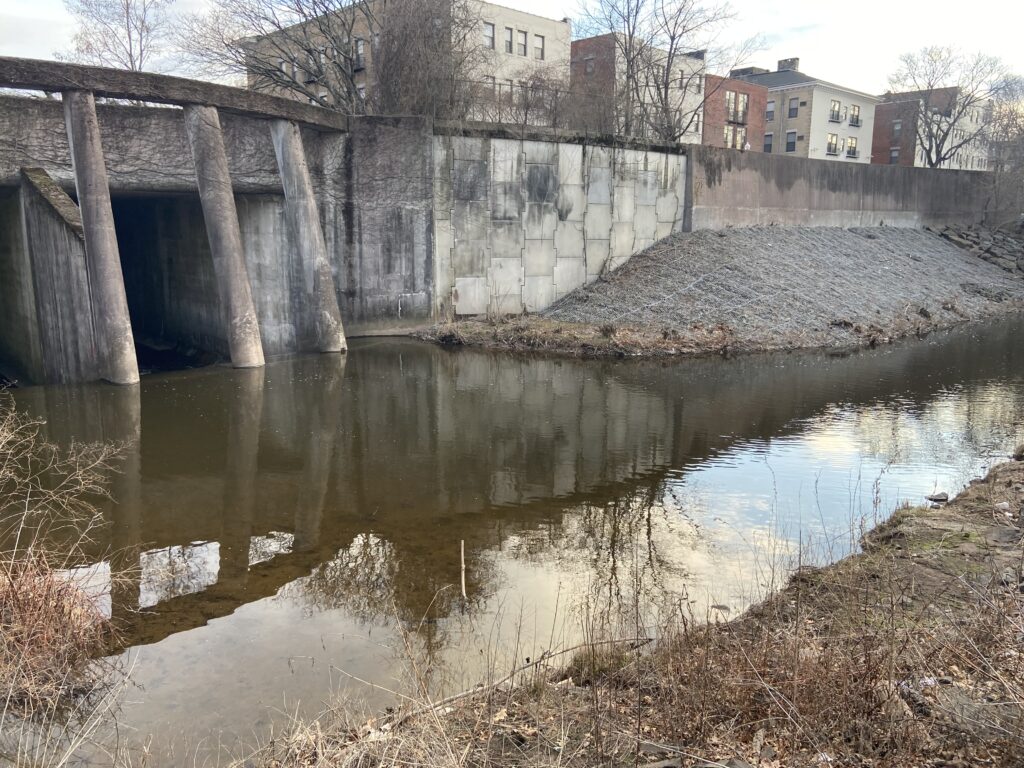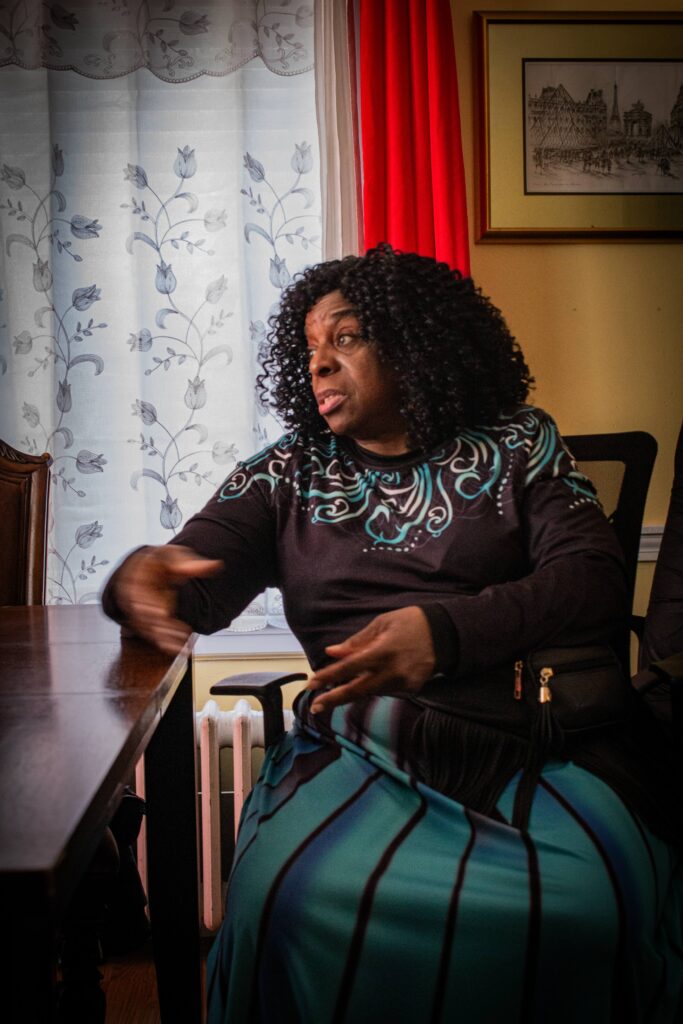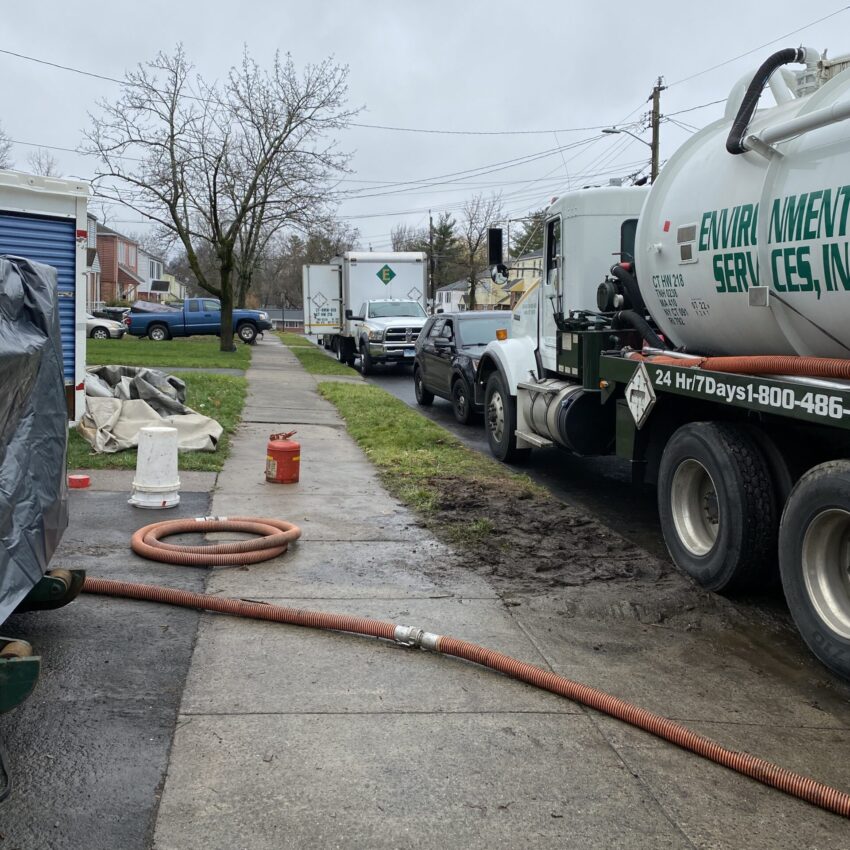By Charlotte Harvey
UConn Journalism
People in the 21st century expect sewage systems to work. They expect them to carry waste away and break down that waste safely. They expect not to have to think about that.
But what if that isn’t your norm? What if, on a rainy day, untreated waste moves the wrong way out of the flooding street pipes, backing up onto streets and into basements?
Many of the residents of the North End of Hartford know that reality and have known it for decades. Every time a storm comes and raw sewage backs up into their basements, they think about it.
Fundamentally, it comes down to another one of those things we expect the government to provide in exchange for taxes: infrastructure.
Mixed sewage and rainwater routinely overflows into the Park River, and then on to the Connecticut River. Since the mid-1990s, the agency that manages water and sewage for Hartford, the Metropolitan District Commission (MDC), has been slowly separating stormwater from sewage pipes. But mixed waste still overflows from 38 different outfall points in the system. These overflow points carry waste that comes from 170 combined sewer overflow (CSO) “regulators” in the Metropolitan District Commission’s underground system. These overflows are usually triggered during rainstorms. In the 1970s, there were approximately 170 CSO regulators in the system that discharged through 47 outfall locations to the receiving streams that include the Park River. Before to the implementation of the current program, the estimated volume of CSO discharged through these outfalls in a typical year was 974 million gallons. The 47 outfall spots have been reduced to 38 outfalls today, according to the state Department of Energy and Environmental Protection.

In the year from May 15, 2024 to May 15, 2025, CSOs overflowed in Hartford 50 times, according to the state’s public database that tracks every overflow. Between May 8 and 10, for example, more than a million gallons of mixed waste and rainwater was automatically diverted into the North Branch of the Park River during a 2‑inch rainstorm. Last August 20, 2024, about 2 million gallons of overflows went into the Connecticut River.
As the MDC has separated pipes and closed many of the overflow points, gallons from the overflows have decreased in the last two decades, from about 974 million gallons each year in 2006 to 488 million gallons of combined raw sewage and stormwater in 2022, according to the environmental group Save the Sound.
But there is much still to do. Waste is still flooding untreated into the rivers during storms, and the work to correct overflows will take many more years, according to legal agreements and plans by the state and the MDC.
The MDC is also building a giant tunnel to store untreated waste after storms. The tunnel is designed to stop flooding and eliminate most overflows near Wethersfield Cove, a popular swimming and boating inlet near Old Wethersfield. Eight of Hartford’s 38 CSOs flow into Wethersfield Cove via the Folly Brook conduit in the southern end of Hartford.
The Connecticut River Conservancy, which monitors water health on the length of the river, says of Wethersfield Cove: “If it has rained in the past 1–2 days, this site is sometimes clean for swimming and sometimes clean for boating.”
Hartford is one of Connecticut’s oldest sewerage systems, set up as a combined system to mix stormwater and waste in the same pipe, explained Graham Stevens, the chief of the Bureau of Water Protection and Land Reuse at the Connecticut Department of Energy and Environmental protection.
“They’re basically the predecessor to our modern way of managing sewers and stormwater,” he said. “The early sewer systems were always built in cities because they wanted a way to manage the waste so it wasn’t a public health nuisance.”
Construction on Hartford’s sewerage and water management system began in the late 1800s and early 1900s. The goal was fairly simple: move wastewater and stormwater away from inhabited areas. “Away” meant the Park River, which drains into the Connecticut River. The waste poured into these rivers with no treatment.

Then, the reasoning went, the waste would be diluted and the system would protect human health and not harm the environment.
Today, these century-plus-year-old combined sewer pipes carry water from the storm drains from the street and from the plumbing inside buildings to a sewage treatment plant, where it is filtered and breaks down. Water from sinks, dishwashers, showers, and toilets— “wastewater,” or “sewage”—mixes with water from the storm drains, traveling together toward the sewage treatment plant.
However, even though these systems are no longer designed to intentionally discharge untreated wastewater into bodies of water, it does still happen.
Cynthia Jennings is an attorney who was fortunate last year to receive a state grant to install a backflow preventer in her Hartland Street basement. She said flooding was routine for her family from childhood, both in her current house and the one where she grew up, on nearby Cambridge Street.
Many longtime residents interviewed for this series said they lived with wastewater backups for much of their lives.
“You would see it every day,” she said, “because the water never went out. And the fire department wouldn’t pump the water, because it wasn’t water – there was other stuff in it. If it was pure water, the fire department would pump it out, but… if it’s anything in there besides water they can’t pump it out,” she said.
Asked who did pump the water out, Jennings responded, “Nobody. Unless you paid the money, and we didn’t have the money.”
TOP IMAGE: Trucks remove wastewater from Sharon Lewis’ home in Hartford, Connecticut, Dec. 9, 2022. (Photo courtesy of Sharon Lewis)
